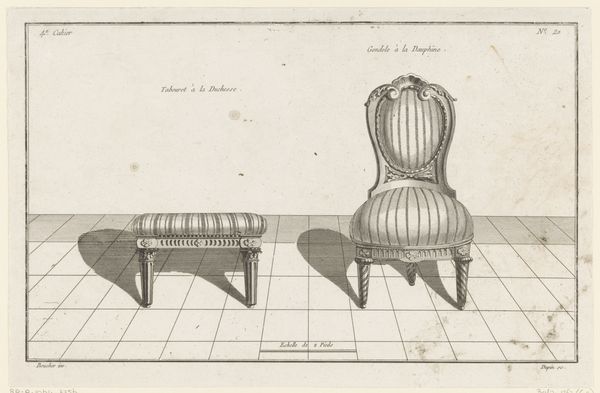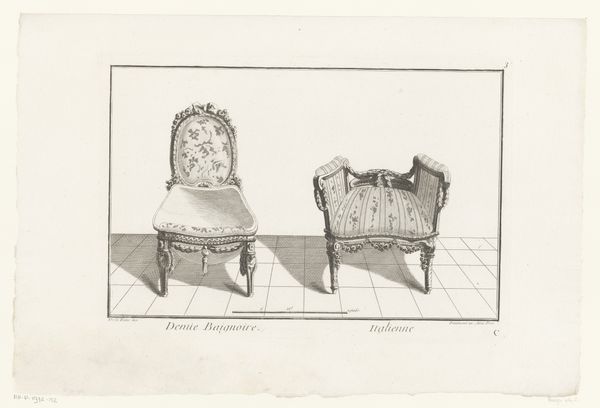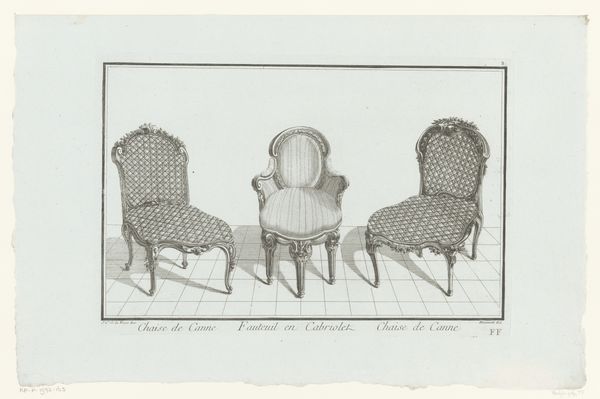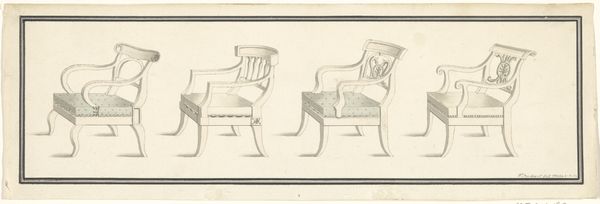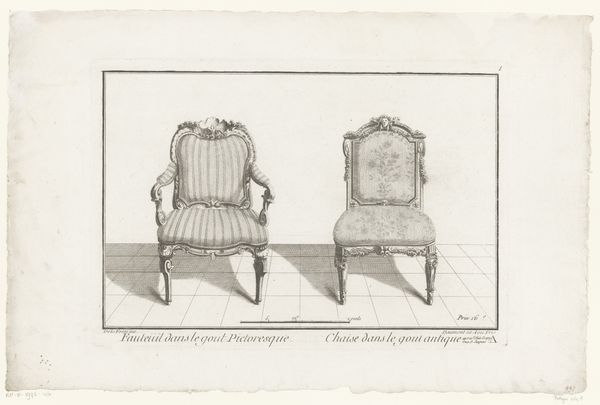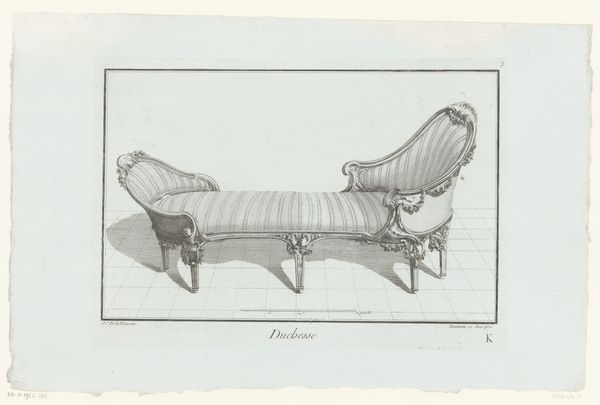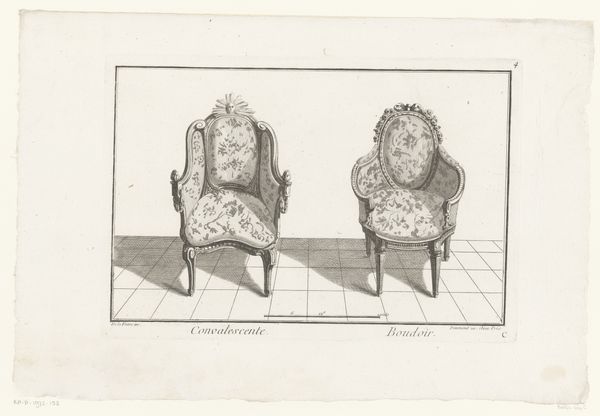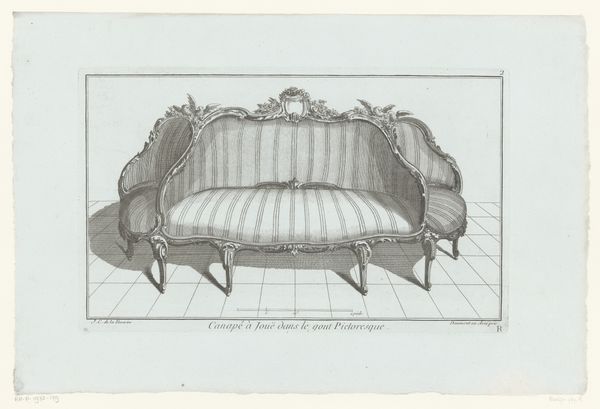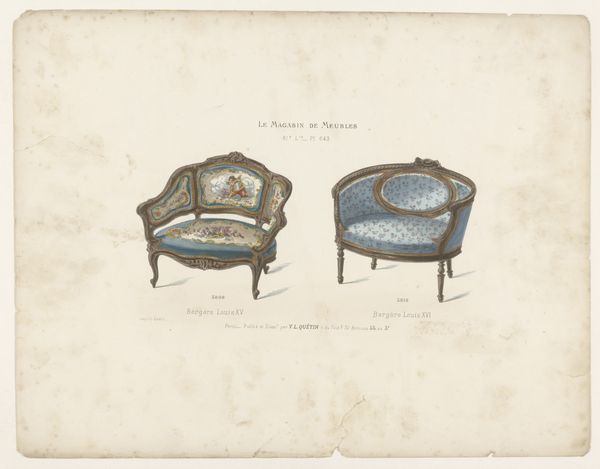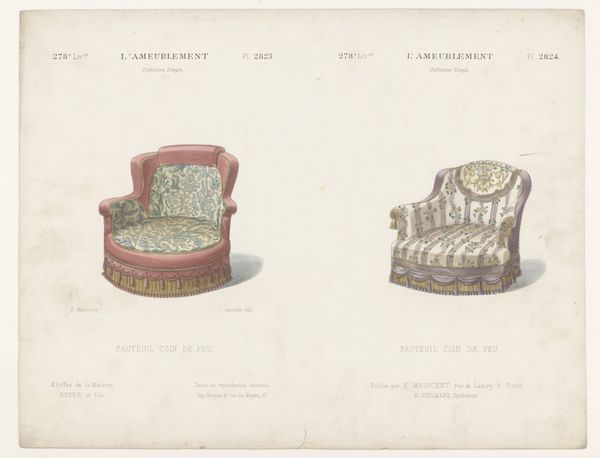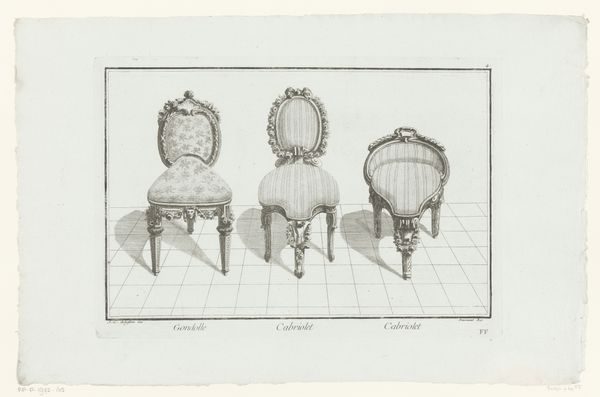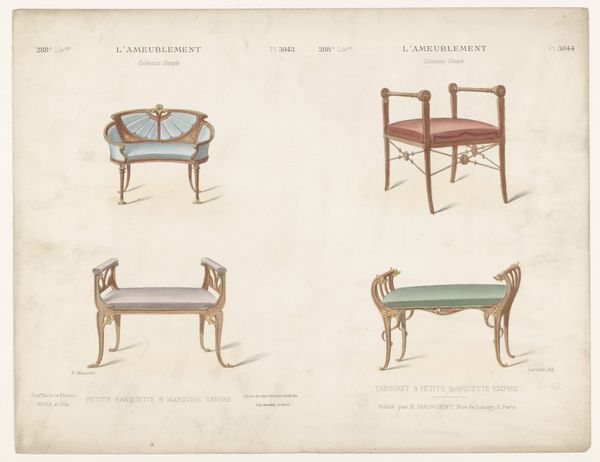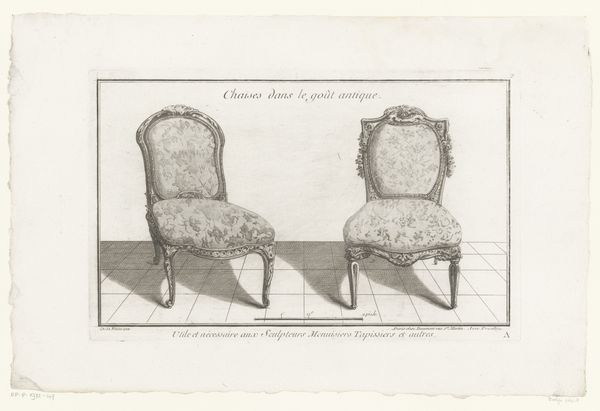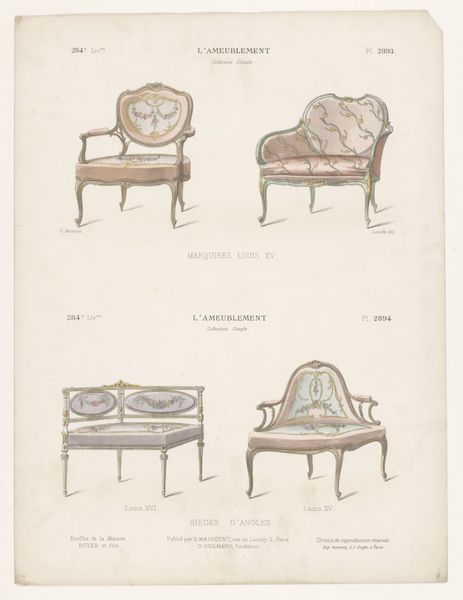
Dimensions: height 205 mm, width 314 mm
Copyright: Rijks Museum: Open Domain
Editor: Here we have "Stoel en twee poefen," or "Chair and Two Poufs," a print made between 1772 and 1779 by Nicolas Dupin, housed in the Rijksmuseum. It’s a simple engraving, but I'm struck by the formality of the objects, displayed almost as if they're portraits. What can you tell me about the historical context of furniture being depicted this way? Curator: That's an astute observation. This print exists within a vibrant culture of design dissemination in 18th-century Europe. Engravings like this served a vital function, allowing furniture makers and their patrons access to the latest styles, particularly those originating in France. Think of them as mood boards that helped in the democratisation of luxury and taste. Note how the captions name the chair design in the French court, while also mentioning an English counterpart. What does this interplay suggest? Editor: It sounds like fashion, or at least keeping up with trends from abroad! I can see how these prints acted as advertisements but also influenced craftsmanship. It's not just about function anymore, it shows that furniture began reflecting social aspirations. Curator: Exactly! Furniture moved from the realm of pure utility to that of social signifier, reflecting identity, status, and engagement with broader cultural trends. The rigid formality in the presentation mirrors this social significance, projecting these objects onto the center stage of cultural exchange and visual communication. Consider how displaying these items elevated furniture beyond the simple. It entered the discourse around style, taste, and class. Editor: I hadn't considered the power dynamics embedded in something as simple as a chair design. Learning about these prints shifts my understanding of the period; it's a subtle commentary on societal structures. Thanks! Curator: Indeed. These visual documents reveal much about social desires and class aspirations. It’s crucial to look beyond face value and consider these prints within their original socio-cultural framework.
Comments
No comments
Be the first to comment and join the conversation on the ultimate creative platform.
